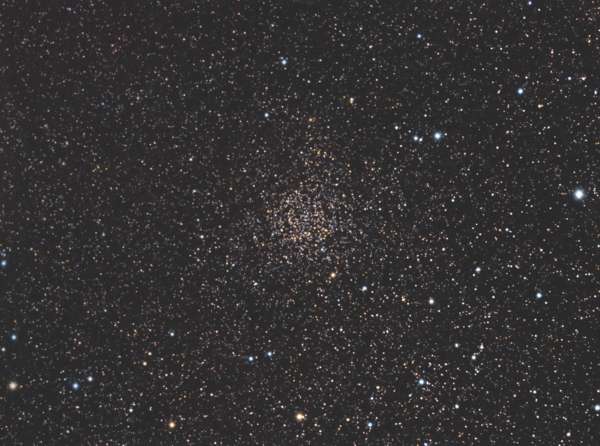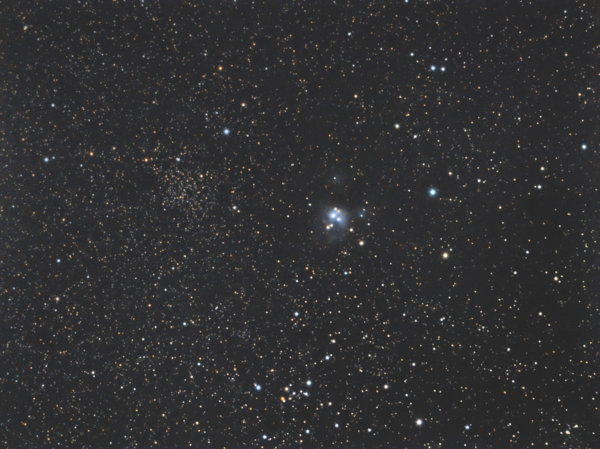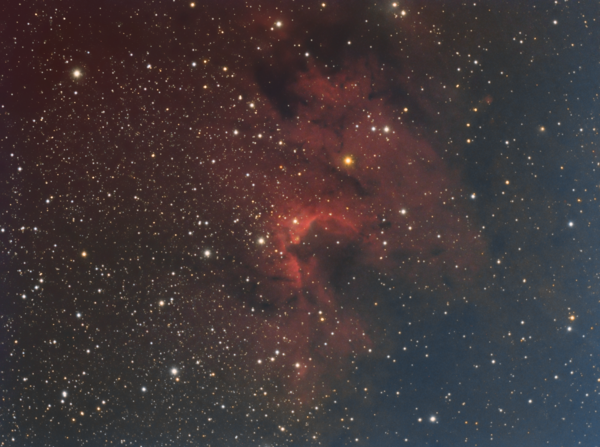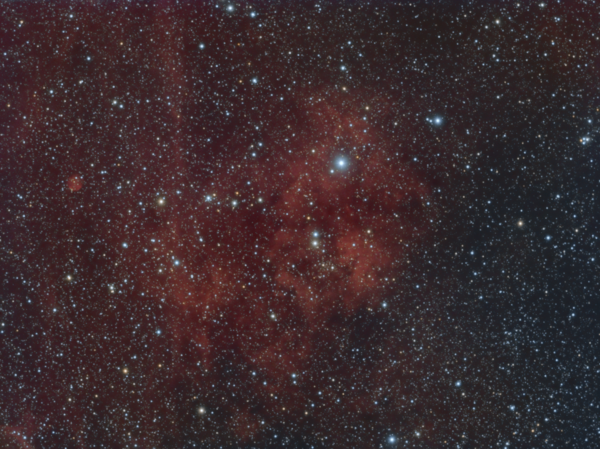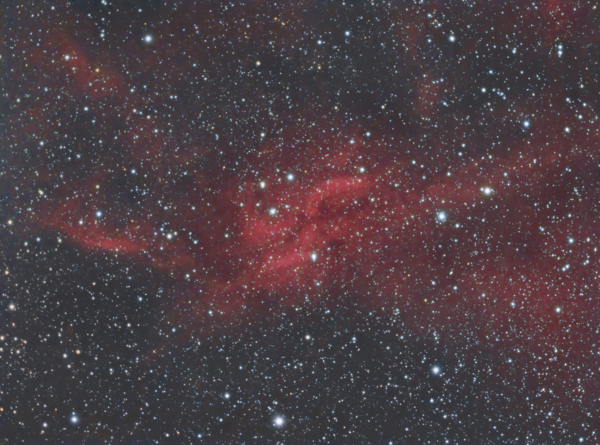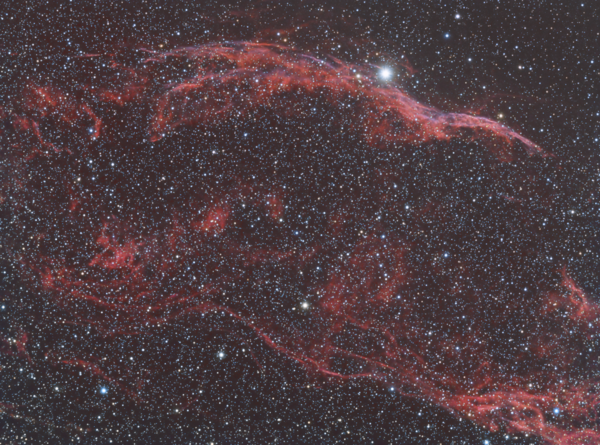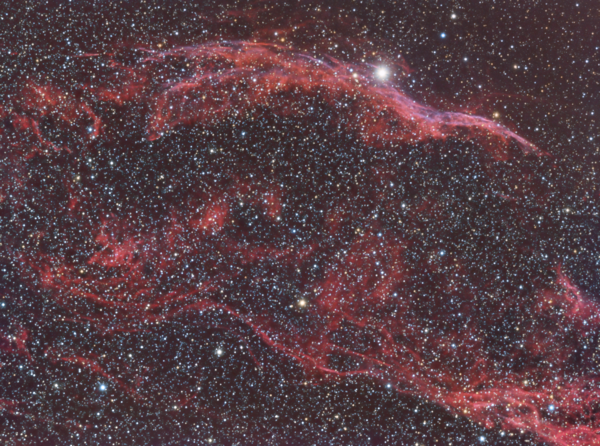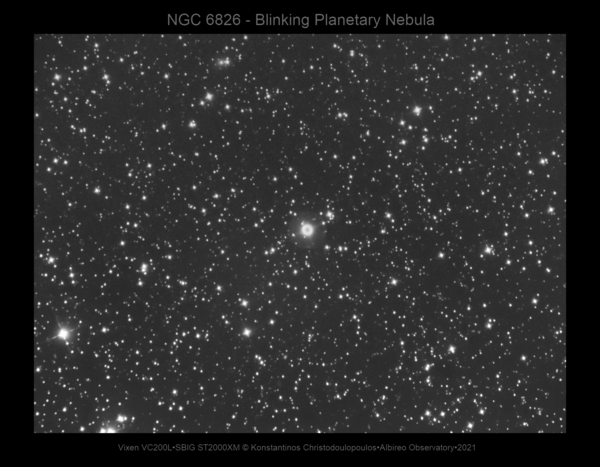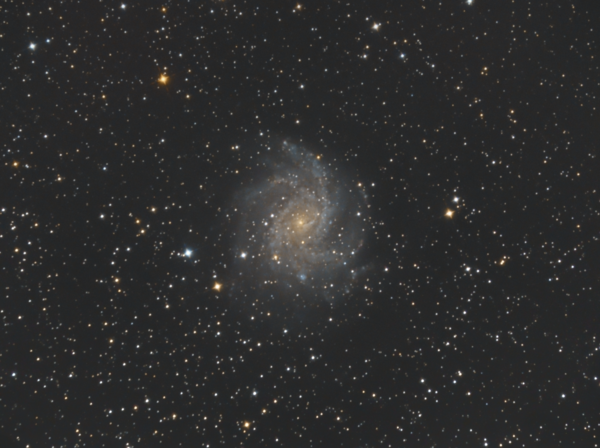-
Αναρτήσεις
3100 -
Εντάχθηκε
-
Τελευταία επίσκεψη
-
Ημέρες που κέρδισε
25
Τύπος περιεχομένου
Forum
Λήψεις
Ιστολόγια
Αστροημερολόγιο
Άρθρα
Αστροφωτογραφίες
Store
Αγγελίες
Όλα αναρτήθηκαν από KC
-
Ζητούντε πλανητικά προσοφθάλμια Celestron X-Cel LX 2.3 mm 1.25" planetary eyepiece - 60° field Explore Scientific 1.25" 82° LER Eyepiece 4.5 mm AR Pentax XW Series 1.25" Wide Angle Eyepiece - 3.5 mm Focal Length, 70° Field TeleVue 1.25" Eyepiece DELOS 3.5 mm - 72° Field ή και Tele Vue Powermate 5x Barlow Lens, 1.25" Ευχαριστώ
-

T-ring για Televue Powermate 2.5x/5x
KC απάντησε στην συζήτηση του/της Spartinixus σε Μικρές Αγγελίες - Αρχείο
Συγνώμη υπήρξε μια παρανόηση απο πλευρά μου νόμιζα ότι ο αντάπτορας αυτός μετατρέπει το barlow 2.5x σε 5x. Οπότε δεν με ενδιαφέρει για φωτογραφική χρήση. -

T-ring για Televue Powermate 2.5x/5x
KC απάντησε στην συζήτηση του/της Spartinixus σε Μικρές Αγγελίες - Αρχείο
Γεια σας με ενδιαφέρει. -
Η αγγελία αποσύρεται. Αποφάσισα να κρατήσω τη στήριξη καθώς πρόκειται για ένα πολύ αξιόπιστο φορητό setup ότι πρέπει για παρατήρηση των ουράνιων αντικειμένων.
-
-
Found among the rich starfields of the Milky Way, star cluster NGC 7789 lies about 8,000 light-years away toward the constellation Cassiopeia. A late 18th century deep sky discovery of astronomer Caroline Lucretia Herschel, the cluster is also known as Caroline''s Rose. Its flowery visual appearance in small telescopes is created by the cluster''s nestled complex of stars and voids. Now estimated to be 1.6 billion years young, the galactic or open cluster of stars also shows its age. All the stars in the cluster were likely born at the same time, but the brighter and more massive ones have more rapidly exhausted the hydrogen fuel in their cores. These have evolved from main sequence stars like the Sun into the many red giant stars shown with a yellowish cast in this lovely color composite. Using measured color and brightness, astronomers can model the mass and hence the age of the cluster stars just starting to \"turn off\" the main sequence and become red giants. Over 50 light-years across, Caroline''s Rose spans about half a degree (the angular size of the Moon) near the center of the wide-field telescopic image. Optics: Vixen ED81s @ f/5.2 Mount: Skywatcher HEQ5 Synscan Pro (belt mod) Guiding: ST-237 guide chip of SBIG ST2000XM Camera: SBIG ST2000XM Filter Wheel: SBIG CFW9 Filters: L,R,G,B CCD Temperature: 0 degrees Celsius Constellation: Cassiopeia Date: August 8-9, 2021 Location: Korinthos - Greece - Albireo Observatory 1 Exposure: L=12x600 min bin 1x1 R=12x300 min bin 1x1 G=12x300 min bin 1x1 B=12x300 min bin 1x1 Calibration: Darks, Flats, Bias
-
Γεια σας Το ανταλλάσετε με αυτό; Vixen VC200L (VISAC) - Modified Cassegrain, Aperture 200mm, Focal Length 1800mm, Focal Ratio f/9.0 (the telescope comes with a Vixen aluminum case); Vixen VC200L focal reducer f/6.4; Parallax rings for Vixen VC200L
-
This wide-field telescopic image looks toward the constellation Cepheus and an intriguing visual pairing of dusty reflection nebula NGC 7129 (right) and open star cluster NGC 7142. The two appear separated by only half a degree on the sky, but they actually lie at quite different distances. In the foreground, dusty nebula NGC 7129 is about 3,000 light-years distant, while open cluster NGC 7142 is likely over 6,000 light-years away. In fact, pervasive and clumpy foreground dust clouds in this region redden the light from NGC 7142, complicating astronomical explorations of the cluster. Still, NGC 7142 is thought to be an older open star cluster, while the bright stars embedded in NGC 7129 are perhaps a few million years young. The telltale reddish crescent shapes around NGC 7129 are associated with energetic jets streaming away from newborn stars. Optics: Vixen ED81s @ f/5.2 Mount: Skywatcher HEQ5 Synscan Pro (belt mod) Guiding: ST-237 guide chip of SBIG ST2000XM Camera: SBIG ST2000XM Filter Wheel: SBIG CFW9 Filters: Ha,L,R,G,B CCD Temperature: 0 degrees Celsius Constellation: Cepheus Date: August 7-8, 2021 Location: Korinthos - Greece - Albireo Observatory 1 Exposure: L=12x600 min bin 1x1 R=12x300 min bin 1x1 G=12x300 min bin 1x1 B=12x300 min bin 1x1 Calibration: Darks, Flats, Bias
-
-
Sh2-155, informally known as the \"cave nebula,\" is dark cloud of gas embedded in a giant emission nebula. The top edge of the cloud is illuminated by several hot, massive (OB) stars that are part of the Cepheus OB3 association. The image was generated with observations in Hydrogen alpha (red), Luminance, Red, Green, Blue filters, from a light polluted sky in Korinthos Greece. Technical details: Optics: Vixen ED81s @ f/5.2 Mount: Skywatcher HEQ5 Synscan Pro (belt mod) Guiding: ST-237 guide chip of SBIG ST2000XM Camera: SBIG ST2000XM Filter Wheel: SBIG CFW9 Filters: Ha,L,R,G,B CCD Temperature: 0 degrees Celsius Constellation: Cepheus Date: August 1-3, 2021 Location: Korinthos - Greece - Albireo Observatory 1 Exposure: L=12x600 min bin 1x1 R=12x300 min bin 1x1 G=12x300 min bin 1x1 B=12x300 min bin 1x1 Ha=18x1200 min bin 1x1 Calibration: Darks, Flats, Bias
-
Sharpless 115 stands just north and west of Deneb, the alpha star of Cygnus the Swan in planet Earth''s skies. Noted in the 1959 catalog by astronomer Stewart Sharpless (as Sh2-115) the faint but lovely emission nebula lies along the edge of one of the outer Milky Way''s giant molecular clouds, about 7,500 light-years away. Shining with the light of ionized atoms of hydrogen, sulfur, and oxygen, the nebular glow is powered by hot stars in star cluster Berkeley 90. The cluster stars are likely only 100 million years old or so and are still embedded in Sharpless 115. But the stars'' strong winds and radiation have cleared away much of their dusty, natal cloud. At the emission nebula''s estimated distance, this cosmic close-up spans just under 100 light-years. Technical details: Optics: Vixen ED81s @ f/5.2 Mount: Skywatcher HEQ5 Synscan Pro (belt mod) Guiding: ST-237 guide chip of SBIG ST2000XM Camera: SBIG ST2000XM Filter Wheel: SBIG CFW9 Filters: Ha,L,R,G,B CCD Temperature: 0 degrees Celsius Constellation: Cygnus Date: August 11-13, 2021 Location: Korinthos - Greece - Albireo Observatory 1 Exposure: L=12x600 min bin 1x1 R=12x300 min bin 1x1 G=12x300 min bin 1x1 B=12x300 min bin 1x1 Ha=18x1200 min bin 1x1 Calibration: Darks, Flats, Bias
-
-
Optics: Vixen ED81s @ f/5.2 Mount: Skywatcher HEQ5 Synscan Pro (belt mod) Guiding: ST-237 guide chip of SBIG ST2000XM Camera: SBIG ST2000XM Filter Wheel: SBIG CFW9 Filters: Ha,L,R,G,B CCD Temperature: 0 degrees Celsius Constellation: Cygnus Date: August 4-6, 2021 Location: Korinthos - Greece - Albireo Observatory 1 Exposure: L=12x600 min bin 1x1 R=12x300 min bin 1x1 G=12x300 min bin 1x1 B=12x300 min bin 1x1 Ha=18x1200 min bin 1x1 Calibration: Darks, Flats, Bias Software: Sharpcap, MaximDL, ACP, Pinpoint, Pixinsight
-
Με αφορμή αυτό το post /forum/album_showpage.php?pic_id=22938 και τη σχετική συζήτηση, ανεβάζω τη νέα version Αφιερωμένη στο φίλο Ηλία για την αρχική ιδέα Παραθέτω και για όποιον ενδιαφέρετε τα βήματα στην επεξεργασία με το πρόγραμμα pixinsight 1) Star alignment L,R,G,B,Ha with reference the Ha 2) Dynamic Crop 3) Deconvolution master L 4) Linear fit R,G,B with L as reference 5) Channel Combination RGB 6) Deconvolution RGB image 7) Deconvolution Ha image Correct color gradients in RGB image 9) Stretch RGB and L image 10) LRGB combination 11) SCNR remove green in LRGB 12) Stretch Ha 13) HaLRGB combination, SCNR remove green 14) Star Deempahsis in HaLRGB 15) Correct gradients in HaLRGB 16) SCNR remove green 17) Expontential Transformation 18) LocalHistogramEqualization 19) TGVDenoise 20) Histogram
-
-
Optics: Vixen ED81s @ f/5.2 Mount: Skywatcher HEQ5 Synscan Pro (belt mod) Guiding: ST-237 guide chip of SBIG ST2000XM Camera: SBIG ST2000XM Filter Wheel: SBIG CFW9 Filters: Ha,L,R,G,B CCD Temperature: 0 degrees Celsius Constellation: Cygnus Date: August 14-15, 2021 Location: Korinthos - Greece - Albireo Observatory 1 Exposure: L=12x600 min bin 1x1 R=12x300 min bin 1x1 G=12x300 min bin 1x1 B=12x300 min bin 1x1 Ha=18x1200 min bin 1x1 Calibration: Darks, Flats, Bias Software: Sharpcap, MaximDL, ACP, Pinpoint, Pixinsight
-

Προβλήματα με ευθυγράμμιση. Polemaster για αναβάθμιση ;;;;;
KC απάντησε στην συζήτηση του/της Chrono detector σε Αστροφωτογράφιση - Γενική συζήτηση
Εγώ πάντως είτε κάνοντας χονδρική πολική ευθυγράμμιση με το μάτι είτε με sharpcap...μετά κάνοντας plate solving οποιοσδήποτε στόχος, ύστερα από 4-5 επαναλαμβανόμενα plate solving, έρχεται ακριβώς στο κέντρο του ccd chip... -
Τα booth των ccds φαντάζομαι είναι όπως τα booth των αυτοκινήτων. Σε ένα booth mercedes δεν πατάει κανείς σε ένα booth suzuki πάνε όλοι. Χωρίς βέβαια να θέλω να πω οτι η sbig είναι κατηγορία mercedes. Είναι η πρώτη μου ccd και δεν έχω μέτρο σύγκρισης. Έχεις να προτείνεις κάποια καλή και οικονομική cmos;
-

Προβλήματα με ευθυγράμμιση. Polemaster για αναβάθμιση ;;;;;
KC απάντησε στην συζήτηση του/της Chrono detector σε Αστροφωτογράφιση - Γενική συζήτηση
Για να βρείς το στόχο σου και να είναι κέντρο το επόμενο βήμα μετά την πολική είναι το plate solving. Αλλά θες εξειδικευμένα προγράμματα για να το πετύχεις αυτό. Φαντάζομαι με ccd κάμερα φωτογραφίζεις; -
Πάντως δε νομίζω ότι το maximdl έχει πεθάνει αν δεις βγάζει συνέχεια ενημερώσεις... https//cdn.diffractionlimited.com/help/maximdl/Release_Notes.htm Ο προβληματισμός μου με το phd2 ξεκινάει όταν φωτογραφίζω σε Ha. Η κάμερα μου sbig st2000xm αν και πολύ παλιά αρχαιολογία θα έλεγα (την κάνει όμως τη δουλειά της ακόμη) διαθέτει δυο τσιπάκια ένα για φωτογράφιση και ένα για οδήγηση. Το πρόβλημα εμφανίζεται όταν χρησιμοποιώ το Ha φίλτρο που εκεί το οδηγητικό τσιπάκι τις πιο πολλές φορές δε βρίσκει guiding star. Υπόψη με LRGB φίλτρα δεν αντιμετωπίζω τέτοιο πρόβλημα. Ε λοιπόν με το Ha για να κάνω αυτόματη οδήγηση θα πρέπει να χρησιμοποιήσω το phd2. Αλλά εκεί έχω θέμα όταν γίνεται meridian flip/dithering όπως έγραψα. Ευτυχώς το έλυσα το πρόβλημα συνδέοντας σαν δεύτερη κάμερα στο maximdl τη dmk21au04 που διαθέτω η οποία συνδέεται στο 9x50 finderscope. Οπότε τώρα κάνωντας pulse guiding μια χαρά δουλεύει το σύστημα μετά το meridian flip/dithering.
-
Σε ευχαριστώ Άγγελε αλλά δεν τα χρησιμοποιώ τα προγράμματα που αναφέρεις.
-
Γεια σας Έχω δυο ερωτήσεις για το PHD2 Guiding Όταν κάνω meridian flip πώς μπορώ να κάνω το PHD2 να συνεχίσει το autoguiding; Όταν κάνω dithering πώς μπορώ να κάνω το PHD2 να συνεχίσει το autoguiding; Το σύστημα μου ελέγχεται από το maximdl + eqmod. Σας ευχαριστώ
-
W. HERSCHEL: [Observed 6 September 1793] A bright point, a little extended, like two points close to one another; as bright as a star of the 8.9 magnitude, surrounded by a very bright milky nebulosity suddenly terminated, having the appearance of a planetary nebula with a lucid center; the border however is not very well defined. It is perfectly round, and I suppose about half a minute in diameter. It is of a middle species, between the planetary nebulae and nebulous stars, and is a beautiful phenomenon. (Η IV-73) ~ The Caldwell Objects, Stephen James O''''Meara Technical details: Optics: Vixen VC200L @ f/6.4 Mount: Skywatcher HEQ5 Synscan Pro (belt mod) Guiding: ST-237 guide chip of SBIG ST2000XM Camera: SBIG ST2000XM Filter Wheel: SBIG CFW9 Filters: L CCD Temperature: 0 degrees Celsius Constellation: Cygnus Date: Jul 18, 2021 Location: Korinthos - Greece - Albireo Observatory 1 Exposure: L=12x300 sec bin 1x1 Calibration: Darks, Flats, Bias Software: Capturing/Calibration/Stacking: MaximDL Processing: Pixinsight
-
-


